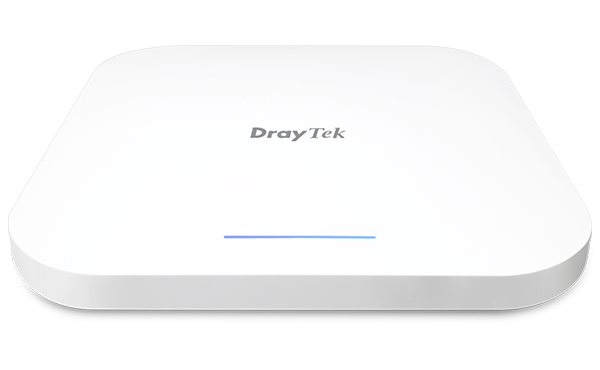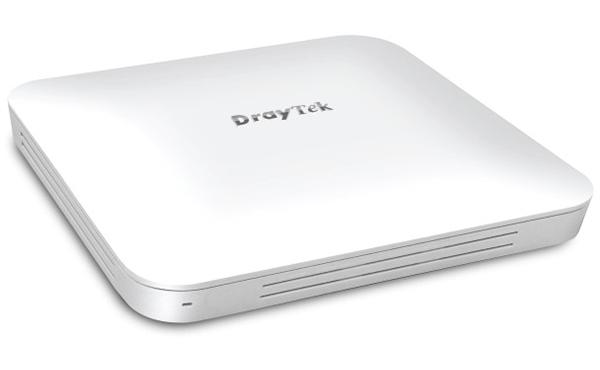

High Performance vs High Capacity:
What do you need to prioritise?
Why the box with the biggest numbers isn’t always the right choice for you
There’s no question – when it comes to routers, access points and wireless networks, speed matters.
When new wireless standards emerge and new products launch, the first thing people want to know is how fast do the connection speeds go? Yet in homes and offices where users aren’t moving multi‐GB files from system to system, and where the biggest bottleneck is usually the internet connection, there may be another metric that matters just as much: capacity.
Why does capacity matter?
Think of your wireless network in terms of a network of pipelines. Increasing the speed that data can flow through those pipelines and widening the pipeline makes it
easier to get lots of data streaming through at a constant speed. That’s important for bandwidth-heavy applications like 4K video streaming, game streaming, or moving large files or high bit‐rate data streams between servers and client PCs.
Up to a point, this can also help as you add more and more traffic from more devices. Fast-moving traffic won’t slow other traffic down and there’s more room in the pipe for that data to keep flowing. Yet there comes a point where limited processing power and competition for bandwidth begins to cause congestion, and the pipe starts to clog up. At this point the maximum flow becomes a non‐issue, because congestion and contention mean you won’t get near it. This happens more than you might think, especially with consumer network kit at the budget end of the market. If, however, you focus less on speed and more on capacity, you can get more data flowing from more devices without any of it slowing down and congestion building up. Here you’ve got several options. You can process what goes through the pipeline so that it flows more efficiently, or even prioritise it so that more speed‐critical applications get preferential treatment. But when your main problem isn’t bandwidth-intensive applications as much as the sheer number of devices connecting, then there might be an even better way forward: to put in a secondary pipeline to keep things moving.
Building capacity
In a way, Wi-Fi 4, Wi-Fi 5 and Wi-Fi 6 have each delivered steps in the right direction.
Back in the 802.11g dark ages, most Wi-Fi traffic shared the 2.4GHz band, where you faced interference from other Wi-Fi networks, not to mention cordless phones, microwaves and a whole lot more. Wi-Fi 4, or 802.11n, allowed networks to use the quieter 5GHz band, where your network traffic had a better chance of reaching higher speeds. What’s more, Wi-Fi 4 introduced MIMO (Multiple Inpit Multiple Output), using multiple transmitters and receivers to transfer more data through the pipeline at the same time. Then Wi-Fi 5 came along with MU‐MIMO (Multi user MIMO), which used those transmitters and receivers to make routers or access points more efficient in the way they handled traffic from several devices connecting at once.
Now Wi-Fi 6 combines MU-MIMO with OFDMA (Orthogonal Frequency Division Multiple Access), a technology brought over from 4G LTE communications. OFDMA uses the available bandwidth and resources even more effectively, splitting each transmission frame in the wireless channel into groups of subcarriers, so that multiple devices can transmit or receive simultaneously. The result is more capacity on each band. Think of it as turning one massive, single‐track road into a four-line motorway, then organising all the traffic so that each lane is always full. OFDMA makes the most of the available bandwidth and keeps the traffic moving fast.
Going Tri-Band
Yet there’s another way to add capacity; by adding a whole other pipeline or, in Wi-Fi terms, another band. That’s why we’re now seeing triple band access points and routers, which deliver the same 2.4GHz and 5GHz bands as a standard Wi-Fi 5 or Wi-Fi 6 router but support an additional secondary 5GHz band.
In a office or hospitality venue where there are large numbers of devices, or several devices running bandwidth‐intensive applications at the same time, that second 5GHz band means there’s more than enough capacity to get all devices and applications up to speed. Where Wi-Fi 5 and Wi-Fi 6 add more antennae to the mix, you’re adding a whole new radio. Each radio can only support a maximum number of devices simultaneously, and – in the real world – that number may be smaller than the 200 or 250 devices you’ll see listed in the product’s spec list. The more radios you have to work with, the more devices you can realistically support.
Raw speed vs monster capacity
You can see these two approaches exemplified in two of Draytek’s latest and most powerful access points: the VigorAP 1000C and the
DrayTek Vigor AP1060C
WiFi 6 Mesh Wireless Access Point
The most powerful wireless access point that Draytek has ever made, the 1060C supports the Wi-Fi 6/801.11ax standard for cumulative speeds of up to 3.6Gbps. It makes full use of 4×4 MU MIMO and OFDMA to deliver peak speeds of 1200Mb/sec over the 2.4GHz band and 2400Mb/sec over 5GHz. The result is a wireless network that enables the fastest Wi-Fi 6 capable devices to run as close as distance and environment allows to their maximum speeds and maintain performance in even the most demanding applications.
DrayTek VigorAp VAP1000C
802.11ac Tri-Band Ceiling-Mount Mesh Wireless Access Point
Buy DrayTek VigorAp VAC1000C Mesh Access Point
The VigorAP 1000C can’t match that top speed; it’s a Wi-Fi 5/802.11ac access point with speeds of up to 400Mb/sec in the 2.4GHz band and 867Mb/sec in the 5GHz band. But what it offers instead is a tri-band wireless network, with a single 2.4GHz band two 5GHz bands. Not only can each band handle a maximum 128 connected devices, making for a total 384 to the VigorAP 1060C’s 256, but it gives you the ability to segment your devices to run on different bands.
In the office, for example, the most demanding or mission-critical devices and applications are placed on their own 5GHz network, where they can operate free of contention from laptops, tablets, smartphones, office printers and everything else. They get the bandwidth and resources they need to run efficiently, and there’s plenty left for other devices on the other band.
As always in networking, there’s no single best or right answer that suits every home or business. For some homes or businesses, performance is the main consideration. In others, capacity needs to take priority. But the key thing is never just to focus on the headline numbers – the four digits after the AX or AC on the box – and to take a good look at the specs and features. Assuming the bigger number is always better could mean missing out on a product that delivers what you really need.
More DrayTek Products Available from Comms Express:
DrayTek Routers & Modems | DrayTek Access Points | DrayTek Switches | DrayTek VoIP | DrayTek License & Warranty Subscription Packs | DrayTek MRB Accessories
If you require any further information on these or any other products that we stock here at Comms Express, please do not hesitate to contact our team who will be only too happy to help.
Until next time…


